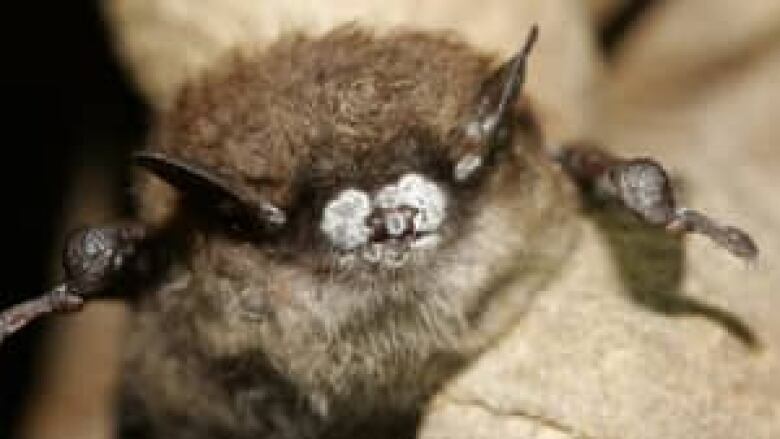'Citizen scientists' called on to help endangered bats
White-nose sydrome has wiped out as much as 95% of Nova Scotia bats

Bat experts are calling on citizen scientists to pitch in and help them trackthe winged critters after this year's devastating decline.
White-nose syndrome is a fungal disease that originated in Europe and is responsible for killing a staggering 90 to 95 per cent of little brown bats, northern long-eared bats and tri-coloured bats in Nova Scotia this year.
The fungus has had such a devastating effect on bat populations that thosethree species are now listed as endangered in the province.Scientists are trying to gather as much information as they can on the bats that are left.

Brad Toms, a wildlife biologist at the Mersey Tobeatic Research Institute, said white nose syndrome came into Nova Scotia from Europe a few years ago.
The sickness causes bats to wake up during hibernation.
"They try and go out and get food, but it's cold and there's no food out, there's no bugs, so they end up either dying of hypothermia or starvation because they've burned all their fat reserves."
Scientists are now racing to get information about the survivors.They have set up a bat hotline and website, www.batconservation.ca.
Toms is calling on citizen scientists to log any bat sightings on the website.
"We're basically trying to fill in those information gaps and the best way to do that is to ask people where they've been seeing them and hopefully the collective knowledge of Nova Scotians can help us in the future," he said.
Toms said crowdsourcing research has worked in the past and he's hoping it works again.












_(720p).jpg)


 OFFICIAL HD MUSIC VIDEO.jpg)
.jpg)



























































































